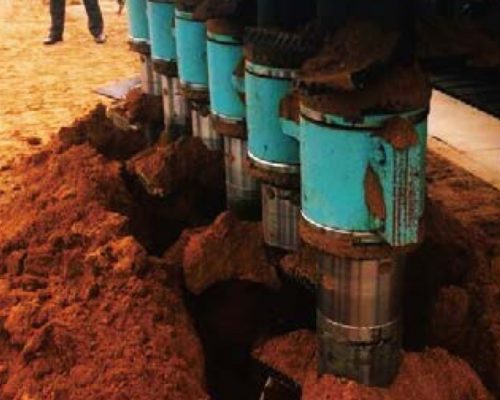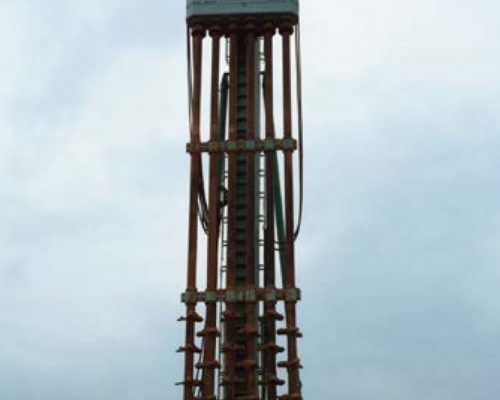Deep Cement Mixing (DCM)
Deep Cement Mixing (DCM) is a ground improvement technique that has been gaining traction in recent years for its ability to provide a cost-effective and efficient solution for ground improvement. This technique involves injecting cement-based grout into the soil to create a homogeneous mixture, which can then be used to improve the bearing capacity of the soil. It can also be used to mitigate seismic hazards and reduce settlement due to soft soils. Deep Soil Mixing can help save time and money while still providing the desired results.

Deep Cement Mixing (DCM)
- Suitable to improve in-situ soft soil strength, like clays, peats, and other weak soils, by mechanically mixing them with cementitious binder
- Starting from rotating auger to penetrate into the subsoil which destroys the soil structure
- When reaches the designed depth, the binder will be injected through nozzles located at the end of the drilling rod
- Then mixing the injected binder with soft soil to create a column of solidified mixture of soil and cement
- The columns will Increase bearing capacity, decrease settlement, and mitigate liquefaction of the soft soil
Major types of deep mixing techniques
- Wet method involves injecting binders in slurry (wet) form to blend with the soft soil
- Dry method uses binders in powder (dry) form that react with soft soil that already has extra high water content

- Wet process normally provides better uniform strength and homogeneity along the column length
- But not suitable to improves soil with high moisture
DCM : Wet Method

- Suitable for soft soil that has high moisture content greater than 60%
- Significantly less effected by low temperatures as compressed air is used to transport binder
DCM : Dry Method





